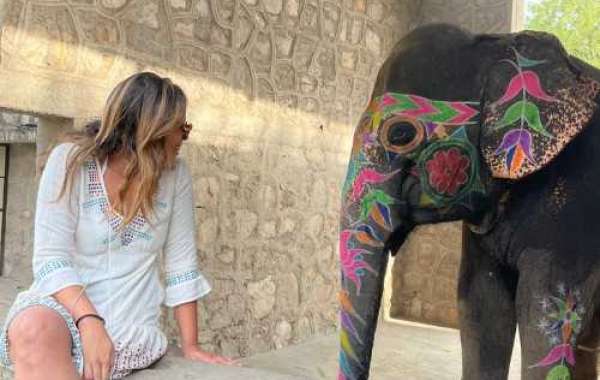As the sun casts its golden glow over the Pink City of Jaipur, one iconic experience stands out amidst the architectural splendors – the Elephant Rides at Amer Fort. This timeless tradition, woven into the fabric of Rajasthan's history, invites us to delve into the past and explore the origins and significance of this regal journey through time.
A Royal Legacy:
The history of elephant rides at Amer Fort dates back centuries, intertwining with the royal legacy of the Kachwaha dynasty. Amer, originally known as Dhundar, was the capital before Jaipur, and it was here that the tradition of ascending the fort on the back of these gentle giants was born. The maharajas and their entourage would embark on these majestic rides, a symbol of their elevated status and connection with the magnificent elephants.
Elephants as Regal Companions:
Elephants have long been revered in Indian culture, symbolizing strength, wisdom, and divinity. In the context of Amer Fort, these majestic creatures were not merely modes of transportation; they were esteemed companions of the royalty. The grandeur of an elephant ride wasn't just a physical journey but a ceremonial procession, a display of opulence that showcased the might and magnificence of the Kachwaha rulers.
The Regal Ascent:
The ascent to Amer Fort on the back of an elephant was, and continues to be, a ceremonial journey fit for kings and queens. The slow and deliberate climb up the hill offered not just a means of reaching the fort but a theatrical approach to entering the royal domain. The regal procession through the Sun Gate, Suraj Pol, set the stage for the grandeur that awaited within the fort's walls.
Symbolism and Rituals:
Beyond the opulence, the elephant rides held deep symbolic significance. The elephant, often considered a sacred animal in Hindu mythology, represented auspiciousness and good fortune. The rituals associated with preparing the elephants, their elaborate adornments, and the ceremonious journey itself were steeped in tradition, reflecting the cultural tapestry of Rajasthan.
Preserving Heritage:
Despite the passage of time and the evolution of transportation, the tradition of elephant rides at Amer Fort remains intact. It's a living testament to the commitment of Jaipur to preserving its cultural heritage. Today, visitors can partake in this historical experience, riding on the same paths that were once traversed by the Maharajas, creating a bridge between the past and the present.
Challenges and Conservation:
The practice of elephant rides has not been without its controversies. Concerns over the welfare of the elephants have prompted a reevaluation of the methods and conditions of these rides. In recent years, there has been a heightened focus on responsible tourism, with efforts to ensure the well-being of the elephants and adherence to ethical practices, striking a delicate balance between tradition and conservation.
See more
Elephant sanctuary, Ethical tourism,










